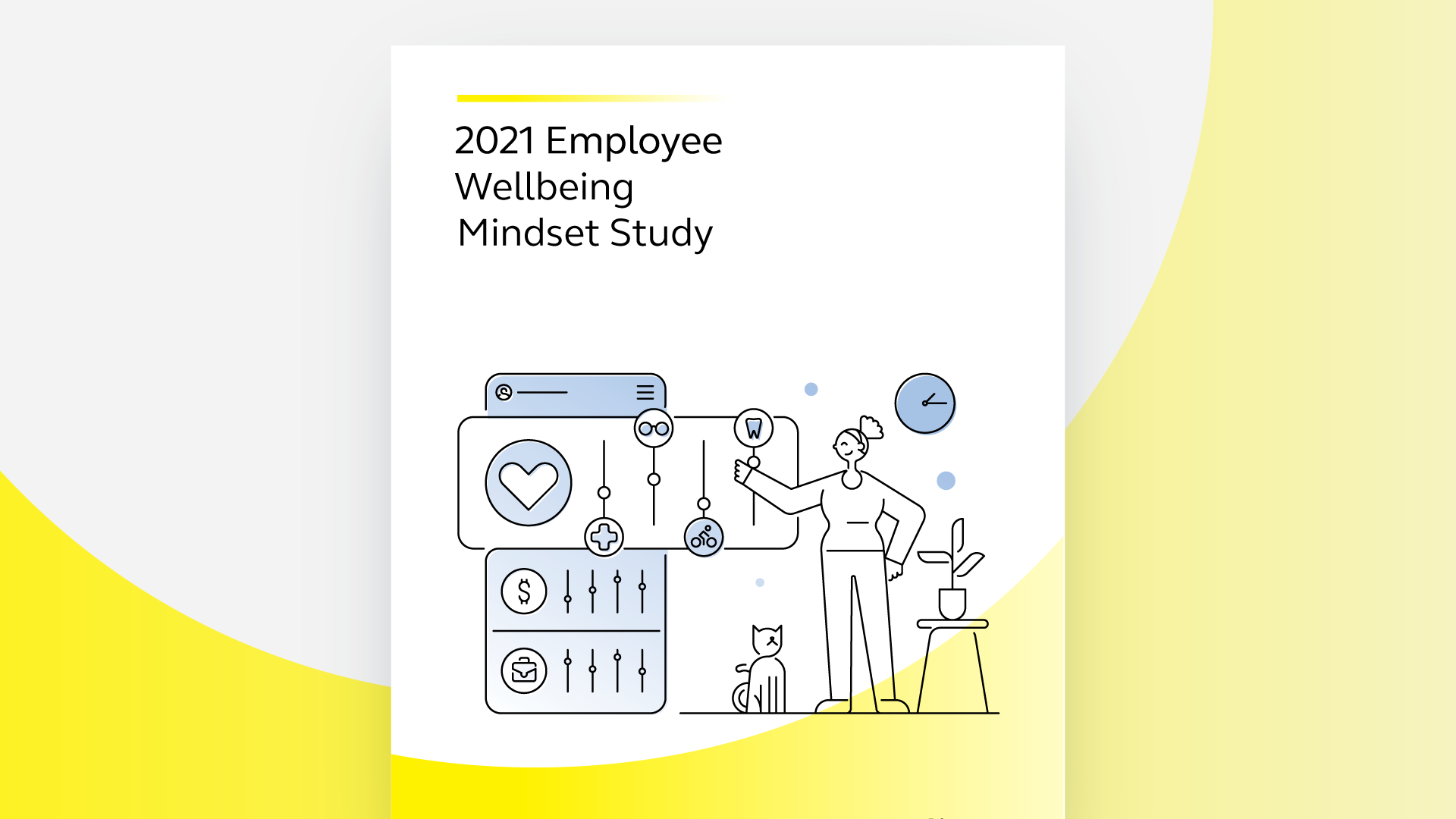
Alight’s annual Employee Wellbeing Mindset Study examines employee perceptions of their wellbeing across five key areas (mental/emotional, social, physical, professional/career and financial) and the relationship between wellbeing and the employee experience. This year’s study of 2,501 U.S. employees was based on survey results collected at the beginning of 2021 offering an interesting look at perceptions after 10 months of the pandemic and the rising hope from vaccines and economic recovery.
Check out the highlights below and download the full report for more insights on the current state of employee wellbeing and how your organization can create a better and healthier experience for your people:
It may come as no surprise, but less than half of U.S. employees have a positive perception of their overall wellbeing as we saw a major decline from early 2020.


The pandemic has tested the mental resiliency of employees, but the good news is people see value in mental health support.

workers say the pandemic has caused their emotional and mental wellbeing to decline
of employees or their dependents sought counseling – up from 28% in 2018
of managers say mental and emotional health training would be valuable in their role as a manager
Employees are exploring ways to optimize health care and reduce costs.

are saving for health care expenses not paid by insurance - up 6 points from 2020
would use Telehealth again, even once the pandemic passes
would be comfortable sharing personal health information for personalized health and wellness guidance — up 4 points from 2020
While many employees are burned out, parents and caregivers in particular struggle to juggle remote learning/caregiving support with their work.

of workers are experiencing symptoms of burnout
of working parents believe that remote learning/caregiving support along with their current workload is too much to handle

29% of employees often dread going to work or starting their workday – up 6 points from 2020
Employees are overwhelmed and need help finding the bandwidth and money to improve their wellbeing.

say living a truly healthy life requires more time, attention and/or money than they’re willing to spend — up 5 points from 2020
have or seriously considered, due to costs, avoided medical care for self or family member, reduced or stopped saving for the future, OR stopped, took less or delayed a prescription
employees are sometimes or often struggling to access healthy food and clean water, health services, safe housing, transportation or outdoor spaces
say “wellbeing programs offered by my employer make me feel better about my employer” — up 4 points from 2020

Employees' top wellbeing priority:
Living within their means/staying within budget


